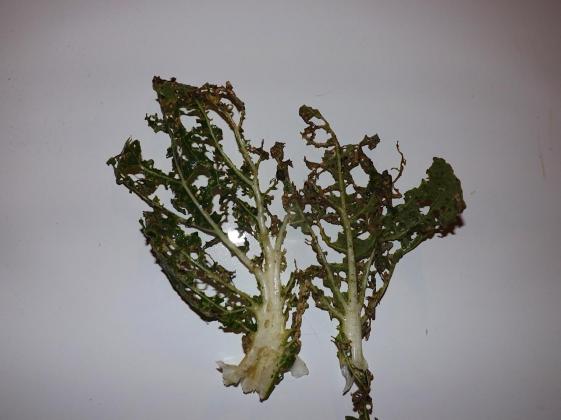
By Dan Gill
LSU AgCenter Horticulturist
Many gardeners consider snails and slugs to be the most disgusting pests in the garden. I could live with their looks if they just didn’t cause so much damage.
Snails and slugs belong to the mollusk family along with oysters. They crawl along on a single foot over a thin layer of slime that they produce to ease their way. Snails carry a shell on their back into which they can retreat when threatened. Slugs do not have shells. Both are mostly active at night, particularly when conditions are moist.
In our mild climate, they are active and cause damage virtually year-round. They enjoy many of the cool-season bedding plants and vegetables in our gardens this time of year. Trees, shrubs, most ground covers and vines are rarely badly damaged by snails and slugs.
The damage snails and slugs cause is obvious, but it can be misdiagnosed. They eat holes in leaves and flowers, especially favoring low-growing, succulent growth. Bedding plants such as pansies, perennials such as hostas and vegetables such as lettuce are particularly susceptible to damage. Snails and slugs will be most active during moist or wet weather and in beds that are regularly irrigated.
Caterpillars and beetles also chew holes in leaves, and because the methods and pesticides for controlling them are different than for snails and slugs, it’s important to know which pest is causing the problem. The presence of slime trails, which look like meandering reflective, silver lines, indicate snails and slugs are the culprits. Holes in the leaves of trees and shrubs are more likely to be caused by caterpillars or beetles rather than by snails and slugs.
Controlling snails and slugs requires perseverance. The main strategies for their control involve baits, traps, hand picking and encouraging predators that eat them.
Baits are generally available in the form of pellets, meal or liquid slurries. The objective is to apply them in such a way that they are likely to be eaten because they must be consumed to work. Follow label directions carefully. Baits should be applied when the snails and slugs are most active. So water the area during the day to provide a suitable environment, and then apply the bait at dusk so it will be fresh at night when the critters are active.
Pellets and meal-type baits may be scattered around your plants over the soil surface or placed in small piles in the garden. If you have pets, covering the piles of bait is a good idea to prevent their contact with it. Commercial covers are available, or you can make one yourself.
Liquid slurries are popular because they are easy to apply and last well. The thick liquid is squeezed out onto the ground underneath plants wherever there is a problem. It may also be applied in a ring to the base of a pot to keep the pests from crawling up and munching on a prized plant.
Baits should be used regularly and in strict accordance with the label recommendations until new damage is reduced to tolerable levels. Metaldehyde baits were the most commonly used for years, and they are effective. But they pose a threat to pets if they eat the bait. A much safer active ingredient, iron phosphate, is just as effective and what I currently recommend you use.
The most popular type of trap for catching snails and slugs is baited with, of all things, beer. To make a beer trap, sink a small plastic bowl up to its rim in the ground and fill it half full of beer. Any kind will do, but it should be fresh. Set the traps in the early evening after watering the yard in areas where snails and slugs have been causing damage. Empty and reset the traps daily until you stop catching many pests in them. Traps are a great way to monitor population levels.
Other traps take advantage of the habit snails and slugs have of crawling under shelter during the day. Place bricks, clay pots, flat rocks or scooped-out half rinds of grapefruit in shady, damp areas of the garden. During the day pick them up, check under them and scrape any snails or slugs you find into a bag or container for disposal.
Hand picking is done at night with a flashlight and is not for the squeamish. It helps to wear latex gloves or use kitchen tongs to pick up the slimy creatures. Put them in a plastic bag and throw them away.
Some gardeners seek out snails and slugs and sprinkle them with salt to kill them. The salt rapidly draws water out of their bodies causing them to “melt” before your eyes. Although this is particularly satisfying to gardeners frustrated by the damage they cause, using salt around your plants can hurt them. I don’t recommend it.
Strips of copper may be used to repel snails and slugs from a bed or pot.
Toads are excellent predators of snails and slugs and can consume large quantities of them. Yes, they’re good guys in the garden, and you should get over any squeamishness you have toward them.
You can attract toads and keep them in your garden by providing a water source such as a small pond, pool or water garden and cover for them to hide under during the day. I build small enclosures or “toad houses” with pieces of brick or stones. Gardens with active populations of hungry toads rarely have major problems with snails and slugs.
